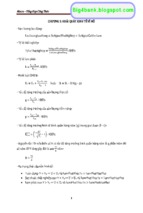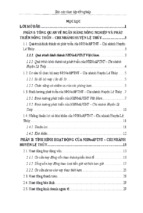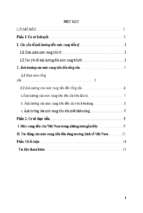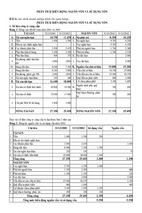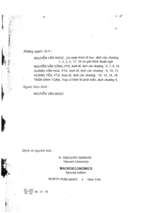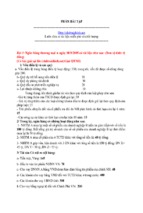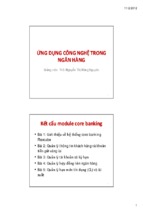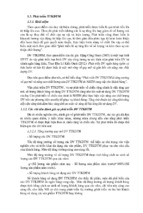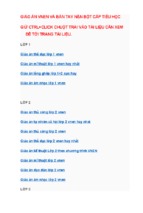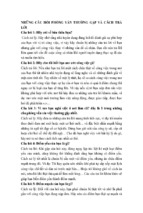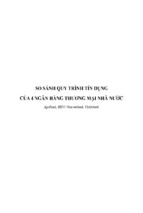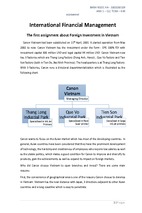Mô tả:
Public Finance
and Public Policy
This page intentionally left blank
THIRD EDITION
Public Finance
and Public Policy
Jonathan Gruber
Massachusetts Institute of Technology
Worth Publishers
To Andrea, Sam, Jack, and Ava
Senior Publisher: Craig Bleyer
Senior Acquisitions Editor: Sarah Dorger
Development Editor: Jane Tufts
Media Development Editor: Marie McHale
Senior Marketing Manager: Scott Guile
Assistant Supplements Editor: Tom Acox
Associate Managing Editor: Tracey Kuehn
Project Editor: Leo Kelly, Macmillan Publishing Solutions
Production Manager: Barbara Anne Seixas
Art Director: Babs Reingold
Cover Design: Kevin Kall
Interior Design: Lissi Sigillo
Photo Editor: Cecilia Varas
Composition: MPS Limited, A Macmillan Company
Printing and Binding: RR Donnelley
Cover Photographs: Capitol Building: Photodisc; Image of “Sign Here” Sign on Tax Form: © David
Arky/Corbis; Image of man guiding steel truss: © Rich LaSalle/Getty Images; Image of businessman
holding “Need Work! Work for Food!” Sign: © Michael N. Paras/Corbis; Image of surgery: © Darren
Kemper/Corbis; Image of elderly people practicing tai chi: © Peter Mumford/Alamy
ISBN-13: 978-1-4292-1949-5
ISBN-10: 1-4292-1949-1
Library of Congress Control Number: 2006937926
© 2011, 2007, 2005 Worth Publishers
All rights reserved
Printed in the United States of America
First printing, 2010
Worth Publishers
41 Madison Avenue
New York, NY 10010
www.worthpublishers.com
About the Author
Dr. Jonathan Gruber is a Professor of Economics at the Massachusetts
Institute of Technology, where he has taught since 1992. He is also the
Director of the Health Care Program at the National Bureau of Economic
Research, where he is a research Associate. He is a co-editor of the Journal of
Public Economics and an Associate Editor of the Journal of Health Economics.
Dr. Gruber received his B.S. in Economics from MIT and his Ph.D.
in Economics from Harvard. He has received an Alfred P. Sloan Foundation Research Fellowship, a FIRST award from the National Institute on
Aging, and the Kenneth Arrow Award for the Best Paper in Health Economics in 1994. He was also one of 15 scientists nationwide to receive
the Presidential Faculty Fellow Award from the National Science Foundation in 1995. Dr. Gruber was elected to the Institute of Medicine in
2005, and in 2006, he received the American Society of Health Economists’ Inaugural Medal for the best health economist in the nation
aged 40 and under. Dr. Gruber’s research focuses on the areas of public
finance and health economics. He has published more than 125 research
articles and has edited six research volumes.
During the 1997–1998 academic year, Dr. Gruber was on leave from
MIT, serving as Deputy Assistant Secretary for Economic Policy at the
U.S. Treasury Department. He was a key architect of Massachusetts’s
ambitious health reform effort, and in 2006, he became an inaugural
member of the Health Connector Board, the main implementing body
for that effort. In that year, he was named the nineteenth-most powerful
person in health care in the United States by Modern Healthcare Magazine.
He acted as a consultant on several presidential campaigns and is considered by the Washington Post to be one of the “most influential” health
care experts in America.
Brief Contents
Preface
.
.
.
.
.
.
.
.
.
.
.
.
.
.
.
.
.
.
.
.
.
.
.
.
.
.
.
.
.
.
.
.
.
.
.
xxvii
PART I Introduction and Background
Why Study Public Finance? . . . . . . . . . . . . . . . . . . . . . . . . . . . . . . . . . . . . . . .1
Theoretical Tools of Public Finance . . . . . . . . . . . . . . . . . . . . . . . . . . . . . . . .25
3 Empirical Tools of Public Finance . . . . . . . . . . . . . . . . . . . . . . . . . . . . . . . . .63
4 Budget Analysis and Deficit Financing . . . . . . . . . . . . . . . . . . . . . . . . . . . . . .91
1
2
PART II Externalities and Public Goods
5
6
7
8
9
10
11
Externalities: Problems and Solutions . . . . . . . . . . . . . . . . . . . . . . . . . . . . .121
Externalities in Action: Environmental and Health Externalities . . . . . . . . . . . .149
Public Goods . . . . . . . . . . . . . . . . . . . . . . . . . . . . . . . . . . . . . . . . . . . . . . .181
Cost-Benefit Analysis . . . . . . . . . . . . . . . . . . . . . . . . . . . . . . . . . . . . . . . . .205
Political Economy . . . . . . . . . . . . . . . . . . . . . . . . . . . . . . . . . . . . . . . . . . .227
State and Local Government Expenditures . . . . . . . . . . . . . . . . . . . . . . . . . .261
Education . . . . . . . . . . . . . . . . . . . . . . . . . . . . . . . . . . . . . . . . . . . . . . . . .289
PART III Social Insurance and Redistribution
12
13
14
15
16
17
Social Insurance: The New Function of Government . . . . . . . . . . . . . . . . . . .319
Social Security . . . . . . . . . . . . . . . . . . . . . . . . . . . . . . . . . . . . . . . . . . . . .353
Unemployment Insurance, Disability Insurance, and Workers’ Compensation .389
Health Insurance I: Health Economics and Private Health Insurance . . . . . . . .419
Health Insurance II: Medicare, Medicaid, and Health Care Reform . . . . . . . . .453
Income Distribution and Welfare Programs . . . . . . . . . . . . . . . . . . . . . . . . .489
PART IV Taxation in Theory and Practice
18
19
20
21
22
23
24
25
Taxation in the United States and Around the World . . . . . . . . . . . . . . . . . . .523
The Equity Implications of Taxation: Tax Incidence . . . . . . . . . . . . . . . . . . . .557
Tax Inefficiencies and Their Implications for Optimal Taxation . . . . . . . . . . . .589
Taxes on Labor Supply . . . . . . . . . . . . . . . . . . . . . . . . . . . . . . . . . . . . . . . .623
Taxes on Savings . . . . . . . . . . . . . . . . . . . . . . . . . . . . . . . . . . . . . . . . . . . .647
Taxes on Risk Taking and Wealth . . . . . . . . . . . . . . . . . . . . . . . . . . . . . . . . .675
Corporate Taxation . . . . . . . . . . . . . . . . . . . . . . . . . . . . . . . . . . . . . . . . . .701
Fundamental Tax Reform . . . . . . . . . . . . . . . . . . . . . . . . . . . . . . . . . . . . . .737
Glossary . . . . . . . . . . . . . . . . . . . . . . . . . . . . . . . . . . . G-1
References . . . . . . . . . . . . . . . . . . . . . . . . . . . . . . . . . . R-1
Name Index . . . . . . . . . . . . . . . . . . . . . . . . . . . . . . . . . NI-1
Subject Index . . . . . . . . . . . . . . . . . . . . . . . . . . . . . . . . SI-1
vi
Contents
Preface
.
.
.
.
.
.
.
.
.
.
.
.
.
.
.
.
.
.
.
.
xxvii
.
.
.
.
.
.
.
.
.
.
.
.
.
.
.
.
CHAPTER 1 Why Study Public Finance?
.
.
.
.
.
.
.
.
.
.
.
.
.
.
.
1.1 The Four Questions of Public Finance
.
.
.
.
.
.
.
.
.
.
.
.
.
.
.
.
.
1
3
When Should the Government Intervene in the Economy? 3
Application: The Measles Epidemic of 1989–1991 5
How Might the Government Intervene? 6
What Are the Effects of Alternative Interventions? 7
Application: The Congressional Budget Office: Government Scorekeepers 8
Why Do Governments Do What They Do? 9
PART I
Introduction
and
Background
1.2 Why Study Public Finance? Facts on Government in the United
States and Around the World . . . . . . . . . . . . . . . . . . . . . . . 10
The Size and Growth of Government 10
Decentralization 12
Spending, Taxes, Deficits, and Debts 12
Distribution of Spending 13
Distribution of Revenue Sources 17
Regulatory Role of the Government 19
1.3 Why Study Public Finance Now? Policy Debates over Social
Security, Health Care, and Education . . . . . . . . . . . . . . . .
.
.
.
20
Social Security 20
Health Care 21
Education 21
1.4 Conclusion
Highlights
.
.
.
.
.
.
.
.
.
.
.
.
.
.
Questions and Problems
Advanced Questions
.
.
.
.
.
.
.
.
.
.
.
.
.
.
.
.
.
.
.
.
.
.
.
.
.
.
.
22
.
.
.
.
.
.
.
.
.
.
.
.
.
.
.
.
.
.
.
.
.
.
.
.
.
.
.
22
.
.
.
.
.
.
.
.
.
.
.
.
.
.
.
.
.
.
.
.
.
.
.
.
.
.
23
.
.
.
.
.
.
.
.
.
.
.
.
.
.
.
.
.
.
.
.
.
.
.
.
.
.
24
CHAPTER 2 Theoretical Tools of Public Finance
2.1 Constrained Utility Maximization
.
.
.
.
.
.
.
.
.
.
.
.
.
.
.
.
.
.
.
.
.
.
.
.
.
.
.
25
.
26
Preferences and Indifference Curves 27
Utility Mapping of Preferences 29
Budget Constraints 31
Putting It All Together: Constrained Choice 33
The Effects of Price Changes: Substitution and Income Effects 35
vii
2.2 Putting the Tools to Work: TANF and Labor
Supply Among Single Mothers
.
.
.
.
.
.
.
.
.
.
.
.
.
.
.
.
.
.
.
.
.
.
.
37
.
.
.
.
.
.
.
.
.
.
.
.
.
.
.
.
.
43
Identifying the Budget Constraint 38
The Effect of TANF on the Budget Constraint 39
2.3 Equilibrium and Social Welfare
.
.
Demand Curves 44
Supply Curves 46
Equilibrium 48
Social Efficiency 49
Competitive Equilibrium Maximizes Social Efficiency 50
From Social Efficiency to Social Welfare: The Role of Equity 52
Choosing an Equity Criterion 54
2.4 Welfare Implications of Benefit Reductions:
The TANF Example Continued
.
.
.
.
.
.
.
.
.
.
.
.
.
.
.
.
.
.
.
.
.
.
.
55
2.5 Conclusion
.
.
.
.
.
.
.
.
.
.
.
.
.
.
.
.
.
.
.
.
.
.
.
.
.
.
.
.
.
.
.
57
Highlights
.
.
.
.
.
.
.
.
.
.
.
.
.
.
.
.
.
.
.
.
.
.
.
.
.
.
.
.
.
.
.
57
.
.
.
.
.
.
.
.
.
.
.
.
.
.
.
.
.
.
.
.
.
.
.
.
.
.
58
.
.
.
.
.
.
.
.
.
.
.
.
.
.
.
.
.
.
.
.
.
.
.
.
.
.
59
.
.
60
.
.
.
Questions and Problems
Advanced Questions
.
.
.
APPENDIX TO CHAPTER 2 The Mathematics of Utility Maximization
CHAPTER 3 Empirical Tools of Public Finance
.
.
.
.
.
.
.
.
.
.
.
63
3.1 The Important Distinction Between
Correlation and Causality
.
.
.
.
.
.
.
.
.
.
.
.
.
.
.
.
.
.
.
.
.
.
.
.
64
.
.
.
.
.
.
.
.
.
66
.
.
.
.
.
.
.
.
.
71
.
The Problem 65
3.2 Measuring Causation with Data We’d Like to Have:
Randomized Trials
.
.
.
.
.
.
.
.
.
.
.
.
.
.
.
.
.
.
.
.
.
Randomized Trials as a Solution 67
The Problem of Bias 67
Randomized Trials of ERT 69
Randomized Trials in the TANF Context 69
Why We Need to Go Beyond Randomized Trials 70
3.3 Estimating Causation with Data We Actually Get:
Observational Data
.
.
.
.
.
.
.
.
Time Series Analysis 72
Cross-Sectional Regression Analysis 75
Quasi-Experiments 80
Structural Modeling 83
viii
.
.
.
.
.
.
.
.
.
.
.
.
3.4 Conclusion
.
.
.
.
.
.
.
.
.
.
.
.
.
.
.
.
.
.
.
.
.
.
.
.
.
.
.
.
.
.
.
85
Highlights
.
.
.
.
.
.
.
.
.
.
.
.
.
.
.
.
.
.
.
.
.
.
.
.
.
.
.
.
.
.
.
85
.
.
.
.
.
.
.
.
.
.
.
.
.
.
.
.
.
.
.
.
.
.
.
.
.
.
85
.
.
.
.
.
.
.
.
.
.
.
.
.
.
.
.
.
.
.
.
.
.
.
.
.
.
86
APPENDIX TO CHAPTER 3 Cross-Sectional Regression Analysis
.
.
.
.
.
88
.
.
.
Questions and Problems
Advanced Questions
.
.
.
CHAPTER 4 Budget Analysis and Deficit Financing
4.1 Government Budgeting
.
.
.
.
.
.
.
.
91
.
.
.
.
.
.
93
4.2 Measuring the Budgetary Position of the Government:
Alternative Approaches . . . . . . . . . . . . . . . . . . . . . .
.
.
.
.
.
98
.
.
.
.
.
.
.
.
.
.
.
.
.
.
.
.
.
.
The Budget Deficit in Recent Years 93
The Budget Process 94
Application: Efforts to Control the Deficit 95
Budget Policies and Deficits at the State Level 97
Real vs. Nominal 98
The Standardized Deficit 99
Cash vs. Capital Accounting 100
Static vs. Dynamic Scoring 102
4.3 Do Current Debts and Deficits Mean Anything?
A Long-Run Perspective . . . . . . . . . . . . . . . . .
.
.
.
.
.
.
.
.
.
103
.
.
.
.
.
.
.
.
.
113
Background: Present Discounted Value 103
Why Current Labels May Be Meaningless 104
Alternative Measures of Long-Run Government Budgets 105
What Does the U.S. Government Do? 109
Application: The Financial Shenanigans of 2001 112
4.4 Why Do We Care About the Government’s
Fiscal Position? . . . . . . . . . . . . . . . . . .
.
.
.
Short-Run vs. Long-Run Effects of the Government on the Macroeconomy 113
Background: Savings and Economic Growth 114
The Federal Budget, Interest Rates, and Economic Growth 115
Intergenerational Equity 117
4.5 Conclusion
.
.
.
.
.
.
.
.
.
.
.
.
.
.
.
.
.
.
.
.
.
.
.
.
.
.
.
.
.
.
118
.
.
.
.
.
.
.
.
.
.
.
.
.
.
.
.
.
.
.
.
.
.
.
.
.
.
.
.
.
.
119
Questions and Problems
.
.
.
.
.
.
.
.
.
.
.
.
.
.
.
.
.
.
.
.
.
.
.
.
.
.
119
Advanced Questions
.
.
.
.
.
.
.
.
.
.
.
.
.
.
.
.
.
.
.
.
.
.
.
.
.
.
120
Highlights
.
.
.
.
.
.
ix
PART II
CHAPTER 5 Externalities: Problems and Solutions
Externalities
and Public
Goods
5.1 Externality Theory
.
.
.
.
.
.
.
.
.
.
.
.
.
.
.
.
.
.
.
.
.
.
.
.
.
.
121
.
.
.
.
.
.
.
123
.
.
.
.
.
.
.
130
.
.
.
.
.
.
.
134
.
.
.
.
.
.
.
137
Economics of Negative Production Externalities 123
Negative Consumption Externalities 126
Application: The Externality of SUVs 127
Positive Externalities 128
5.2 Private-Sector Solutions to Negative Externalities
The Solution 130
The Problems with Coasian Solutions 132
5.3 Public-Sector Remedies for Externalities
.
.
.
.
.
.
Corrective Taxation 135
Subsidies 136
Regulation 137
5.4 Distinctions Between Price and Quantity Approaches
to Addressing Externalities
.
.
.
.
.
.
.
.
.
.
.
.
.
.
.
.
.
Basic Model 137
Price Regulation (Taxes) vs. Quantity Regulation in This Model 139
Multiple Plants with Different Reduction Costs 140
Uncertainty About Costs of Reduction 143
5.5 Conclusion
.
.
.
.
.
.
.
.
.
.
.
.
.
.
.
.
.
.
.
.
.
.
.
.
.
.
.
.
.
.
146
.
.
.
.
.
.
.
.
.
.
.
.
.
.
.
.
.
.
.
.
.
.
.
.
.
.
.
.
.
.
146
Questions and Problems
.
.
.
.
.
.
.
.
.
.
.
.
.
.
.
.
.
.
.
.
.
.
.
.
.
.
147
Advanced Questions
.
.
.
.
.
.
.
.
.
.
.
.
.
.
.
.
.
.
.
.
.
.
.
.
.
.
148
Highlights
.
.
.
.
.
.
CHAPTER 6 Externalities in Action: Environmental and Health
Externalities . . . . . . . . . . . . . . . . . . . . . . . . . . . . . . . 149
6.1 Acid Rain
.
.
.
.
.
.
.
.
.
.
.
.
.
.
.
.
.
.
.
.
.
.
.
.
.
.
.
.
.
.
.
150
The Damage of Acid Rain 150
History of Acid Rain Regulation 151
Empirical Evidence: Estimating the Adverse Health Effects of Particulates 152
Has the Clean Air Act Been a Success? 154
6.2 Global Warming
.
.
.
.
.
.
.
.
.
.
.
.
.
.
.
Application: The Montreal Protocol 157
The Kyoto Treaty 158
Can Trading Make Kyoto More Cost-Effective? 158
What Does the Future Hold? 161
Application: Congress Takes on Global Warming 162
x
.
.
.
.
.
.
.
.
.
.
.
.
155
6.3 The Economics of Smoking
.
.
.
.
.
.
.
.
.
.
.
.
.
.
.
.
.
.
.
.
.
165
The Externalities of Smoking 166
Should We Care Only About Externalities, or Do “Internalities” Matter Also? 170
6.4 The Economics of Other Addictive Behaviors
.
.
.
.
.
.
.
.
.
.
.
173
Drinking 173
Illicit Drugs 174
Application: Public Policy Toward Obesity 174
Summary 177
6.5 Conclusion
.
.
.
.
.
.
.
.
.
.
.
.
.
.
.
.
.
.
.
.
.
.
.
.
.
.
.
.
.
.
177
.
.
.
.
.
.
.
.
.
.
.
.
.
.
.
.
.
.
.
.
.
.
.
.
.
.
.
.
.
.
178
Questions and Problems
.
.
.
.
.
.
.
.
.
.
.
.
.
.
.
.
.
.
.
.
.
.
.
.
.
.
178
Advanced Questions
.
.
.
.
.
.
.
.
.
.
.
.
.
.
.
.
.
.
.
.
.
.
.
.
.
.
179
Highlights
.
.
.
.
.
.
CHAPTER 7 Public Goods
.
.
.
.
.
.
.
.
7.1 Optimal Provision of Public Goods
.
.
.
.
.
.
.
.
.
.
.
.
.
.
.
181
.
.
.
.
.
.
.
.
.
.
.
.
.
.
.
.
182
.
.
.
.
.
.
.
.
.
.
.
.
.
.
.
.
187
Optimal Provision of Private Goods 183
Optimal Provision of Public Goods 185
7.2 Private Provision of Public Goods
.
Private-Sector Underprovision 188
Application: The Free Rider Problem in Practice 189
Can Private Providers Overcome the Free Rider Problem? 190
Application: Business Improvement Districts 190
When Is Private Provision Likely to Overcome the Free Rider Problem? 192
7.3 Public Provision of Public Goods
.
.
.
.
.
.
.
.
.
.
.
.
.
.
.
.
.
194
Private Responses to Public Provision: The Problem of Crowd-Out 195
Measuring the Costs and Benefits of Public Goods 197
How Can We Measure Preferences for the Public Good? 197
Empirical Evidence: Measuring Crowd-Out 198
7.4 Conclusion
.
.
.
.
.
.
.
.
.
.
.
.
.
.
.
.
.
.
.
.
.
.
.
.
.
.
.
.
.
.
199
.
.
.
.
.
.
.
.
.
.
.
.
.
.
.
.
.
.
.
.
.
.
.
.
.
.
.
.
.
.
200
Questions and Problems
.
.
.
.
.
.
.
.
.
.
.
.
.
.
.
.
.
.
.
.
.
.
.
.
.
.
200
Advanced Questions
.
.
.
.
.
.
.
.
.
.
.
.
.
.
.
.
.
.
.
.
.
.
.
.
.
.
201
.
.
.
.
.
.
.
.
.
.
202
Highlights
.
.
.
.
.
.
APPENDIX TO CHAPTER 7 The Mathematics of Public
Goods Provision
.
.
.
.
.
.
.
.
.
.
.
.
.
.
.
.
.
.
.
.
xi
CHAPTER 8 Cost-Benefit Analysis
.
.
.
.
.
8.1 Measuring the Costs of Public Projects
.
.
.
.
.
.
.
.
.
.
.
.
.
205
.
.
.
.
.
.
.
.
.
.
.
.
.
206
8.2 Measuring the Benefits of Public Projects
.
.
.
.
.
.
.
.
.
.
.
.
210
.
The Example 207
Measuring Current Costs 208
Measuring Future Costs 209
Valuing Driving Time Saved 210
Application: The Problems of Contingent Valuation 213
Empirical Evidence: Valuing Time Savings 214
Valuing Saved Lives 215
Application: Valuing Life 215
Discounting Future Benefits 220
Cost-Effectiveness Analysis 220
8.3 Putting It All Together
.
.
.
.
.
.
.
.
.
.
.
.
.
.
.
.
.
.
.
.
.
.
.
221
Other Issues in Cost-Benefit Analysis 221
8.4 Conclusion
.
.
.
.
.
.
.
.
.
.
.
.
.
.
.
.
.
.
.
.
.
.
.
.
.
.
.
.
.
.
223
.
.
.
.
.
.
.
.
.
.
.
.
.
.
.
.
.
.
.
.
.
.
.
.
.
.
.
.
.
.
223
Questions and Problems
.
.
.
.
.
.
.
.
.
.
.
.
.
.
.
.
.
.
.
.
.
.
.
.
.
.
224
Advanced Questions
.
.
.
.
.
.
.
.
.
.
.
.
.
.
.
.
.
.
.
.
.
.
.
.
.
.
225
Highlights
.
.
.
.
.
.
CHAPTER 9 Political Economy
.
.
.
.
.
.
.
.
.
.
9.1 Unanimous Consent on Public Goods Levels
.
.
.
.
.
.
.
.
.
.
.
.
.
.
.
227
.
.
.
.
.
.
229
.
.
.
.
.
.
232
.
.
.
.
.
.
241
Lindahl Pricing 229
Problems with Lindahl Pricing 231
9.2 Mechanisms for Aggregating Individual Preferences
Application: Direct Democracy in the United States 232
Majority Voting: When It Works 234
Majority Voting: When It Doesn’t Work 236
Arrow’s Impossibility Theorem 237
Restricting Preferences to Solve the Impossibility Problem 237
Median Voter Theory 239
The Potential Inefficiency of the Median Voter Outcome 239
Summary 240
9.3 Representative Democracy
.
.
.
.
.
.
.
.
.
.
.
.
.
.
.
Vote-Maximizing Politicians Represent the Median Voter 241
Assumptions of the Median Voter Model 242
Lobbying 244
Application: Farm Policy in the United States 245
Evidence on the Median Voter Model for Representative Democracy 247
Empirical Evidence: Testing the Median Voter Model 248
xii
9.4 Public Choice Theory: The Foundations
of Government Failure . . . . . . . . . . . . .
.
.
.
.
.
.
.
.
.
.
.
.
.
.
249
Size-Maximizing Bureaucracy 249
Problems with Privatization 250
Application: Contracting Out with Non-Competitive Bidding 251
Leviathan Theory 253
Corruption 254
Application: Government Corruption 254
Empirical Evidence: Government Failures and Economic Growth 257
The Implications of Government Failure 258
9.5 Conclusion
.
.
.
.
.
.
.
.
.
.
.
.
.
.
.
.
.
.
.
.
.
.
.
.
.
.
.
.
.
.
258
.
.
.
.
.
.
.
.
.
.
.
.
.
.
.
.
.
.
.
.
.
.
.
.
.
.
.
.
.
.
258
Questions and Problems
.
.
.
.
.
.
.
.
.
.
.
.
.
.
.
.
.
.
.
.
.
.
.
.
.
.
259
Advanced Questions
.
.
.
.
.
.
.
.
.
.
.
.
.
.
.
.
.
.
.
.
.
.
.
.
.
.
260
Highlights
.
.
.
.
.
.
CHAPTER 10 State and Local Government Expenditures
10.1 Fiscal Federalism in the United States and Abroad
.
.
.
.
261
.
.
.
.
.
.
263
.
.
.
.
.
.
.
267
Spending and Revenue of State and Local Governments 264
Fiscal Federalism Abroad 265
10.2 Optimal Fiscal Federalism
.
.
.
.
.
.
.
.
.
.
.
.
.
.
The Tiebout Model 267
Problems with the Tiebout Model 269
Evidence on the Tiebout Model 271
Optimal Fiscal Federalism 273
Empirical Evidence: Evidence for Capitalization from California’s
Proposition 13 274
10.3 Redistribution Across Communities
.
.
.
.
.
.
.
.
.
.
.
.
.
.
.
275
Should We Care? 276
Tools of Redistribution: Grants 277
Redistribution in Action: School Finance Equalization 282
Empirical Evidence: The Flypaper Effect 283
Application: School Finance Equalization and Property
Tax Limitations in California 285
10.4 Conclusion
.
.
.
.
.
.
.
.
.
.
.
.
.
.
.
.
.
.
.
.
.
.
.
.
.
.
.
.
.
285
.
.
.
.
.
.
.
.
.
.
.
.
.
.
.
.
.
.
.
.
.
.
.
.
.
.
.
.
.
286
Questions and Problems
.
.
.
.
.
.
.
.
.
.
.
.
.
.
.
.
.
.
.
.
.
.
.
.
.
.
286
Advanced Questions
.
.
.
.
.
.
.
.
.
.
.
.
.
.
.
.
.
.
.
.
.
.
.
.
.
.
287
Highlights
.
.
.
.
.
.
.
xiii
CHAPTER 11 Education
.
.
.
.
.
.
.
.
.
.
.
.
.
.
.
.
.
.
.
.
.
.
.
.
289
11.1 Why Should the Government Be Involved
in Education?
.
.
.
.
.
.
.
.
.
292
11.2 How Is the Government Involved in Education?
.
.
.
.
.
.
.
.
294
.
.
.
.
.
.
.
.
304
.
.
.
.
307
.
.
.
.
.
.
.
.
.
.
.
.
.
.
.
.
.
.
.
.
.
.
.
Productivity 292
Citizenship 293
Credit Market Failures 293
Failure to Maximize Family Utility 293
Redistribution 294
Free Public Education and Crowding Out 295
Solving the Crowd-Out Problem: Vouchers 297
Problems with Educational Vouchers 300
11.3 Evidence on Competition in Education Markets
Direct Experience with Vouchers 304
Experience with Public School Choice 304
Empirical Evidence: Estimating the Effects of Voucher Programs 305
Experience with Public School Incentives 306
Bottom Line on Vouchers and School Choice 307
11.4 Measuring the Returns to Education
.
.
.
.
.
.
.
.
.
.
Effects of Education Levels on Productivity 308
Effect of Education Levels on Other Outcomes 309
Empirical Evidence: Estimating the Return to Education and Evidence
for Screening 310
The Impact of School Quality 310
11.5 The Role of the Government in Higher Education
.
.
.
.
.
.
.
311
Empirical Evidence: Estimating the Effects of School Quality 312
Current Government Role 313
What Is the Market Failure and How Should It Be Addressed? 314
11.6 Conclusion
.
.
.
.
.
.
.
.
.
.
.
.
.
.
.
.
.
.
.
.
.
.
.
.
.
.
.
.
.
315
.
.
.
.
.
.
.
.
.
.
.
.
.
.
.
.
.
.
.
.
.
.
.
.
.
.
.
.
.
316
Questions and Problems
.
.
.
.
.
.
.
.
.
.
.
.
.
.
.
.
.
.
.
.
.
.
.
.
.
.
316
Advanced Questions
.
.
.
.
.
.
.
.
.
.
.
.
.
.
.
.
.
.
.
.
.
.
.
.
.
.
317
Highlights
PART III
Social
Insurance and
Redistribution
xiv
.
.
.
.
.
.
.
CHAPTER 12 Social Insurance: The New Function
of Government . . . . . . . . . . . . . . . . . . . . . .
.
.
.
12.1 What Is Insurance and Why Do Individuals Value It?
What Is Insurance? 321
Why Do Individuals Value Insurance? 322
Formalizing This Intuition: Expected Utility Model 323
.
.
.
.
.
.
.
.
.
319
.
321
12.2 Why Have Social Insurance? Asymmetric Information
and Adverse Selection . . . . . . . . . . . . . . . . . . . . . . .
.
.
.
.
326
Asymmetric Information 326
Example with Full Information 327
Example with Asymmetric Information 327
The Problem of Adverse Selection 329
Does Asymmetric Information Necessarily Lead to Market Failure? 330
Application: Adverse Selection and Health Insurance “Death Spirals” 331
How Does the Government Address Adverse Selection? 332
12.3 Other Reasons for Government Intervention
in Insurance Markets . . . . . . . . . . . . . . . . .
.
.
.
.
.
.
.
333
.
.
.
.
.
.
.
337
.
.
.
.
.
.
.
.
342
12.6 Putting It All Together: Optimal Social Insurance
.
.
.
.
.
.
.
346
12.7 Conclusion
.
.
.
Externalities 333
Administrative Costs 333
Redistribution 334
Paternalism 334
Application: Flood Insurance and the Samaritan’s Dilemma 334
12.4 Social Insurance vs. Self-Insurance:
How Much Consumption Smoothing? . . .
.
.
.
.
.
.
.
.
Example: Unemployment Insurance 337
Lessons for Consumption-Smoothing Role of Social Insurance 341
12.5 The Problem with Insurance: Moral Hazard
.
.
.
Application: The Problems with Assessing Workers’
Compensation Injuries 343
What Determines Moral Hazard? 344
Moral Hazard Is Multidimensional 344
The Consequences of Moral Hazard 345
.
.
.
.
.
.
.
.
.
.
.
.
.
.
.
.
.
.
.
.
.
.
.
.
.
.
.
.
.
346
.
.
.
.
.
.
.
.
.
.
.
.
.
.
.
.
.
.
.
.
.
.
.
.
.
.
.
.
.
347
Questions and Problems
.
.
.
.
.
.
.
.
.
.
.
.
.
.
.
.
.
.
.
.
.
.
.
.
.
.
347
Advanced Questions
.
.
.
.
.
.
.
.
.
.
.
.
.
.
.
.
.
.
.
.
.
.
.
.
.
.
348
Highlights
.
.
.
.
.
.
.
APPENDIX TO CHAPTER 12 Mathematical Models
of Expected Utility
.
.
.
.
.
.
.
.
.
.
.
.
.
.
.
.
.
.
.
.
.
.
.
350
CHAPTER 13 Social Security
.
.
.
.
.
.
.
.
.
.
.
.
.
.
.
.
.
.
.
.
.
.
353
13.1 What Is Social Security and How Does It Work?
.
.
.
.
.
.
.
.
354
.
.
.
.
.
.
Program Details 355
Application: Why Choose 35 Years? 355
xv
How Does Social Security Work Over Time? 359
Application: Ida May Fuller 360
How Does Social Security Redistribute in Practice? 362
13.2 Consumption-Smoothing Benefits
of Social Security
.
.
.
.
.
.
.
.
.
.
.
.
.
.
.
.
.
.
.
.
.
.
.
.
.
.
.
.
.
364
.
.
.
.
.
.
.
.
.
.
.
.
.
.
.
.
367
.
.
.
.
374
Rationales for Social Security 364
Does Social Security Smooth Consumption? 365
Social Security and Private Savings 366
Living Standards of the Elderly 366
13.3 Social Security and Retirement
.
Theory 367
Empirical Evidence: Measuring the Crowd-Out Effect of Social
Security on Savings 368
Evidence 369
Application: Implicit Social Security Taxes and Retirement Behavior 372
Implications 374
13.4 Social Security Reform
.
.
.
.
.
.
.
.
.
.
.
.
.
.
.
.
.
.
Reform Round I: The Greenspan Commission 375
Application: The Social Security Trust Fund and National Savings 376
Incremental Reforms 377
Fundamental Reforms 379
Application: Company Stock in 401(k) Plans 383
Application: Mixed Proposals for Social Security Reform 384
13.5 Conclusion
.
.
.
.
.
.
.
.
.
.
.
.
.
.
.
.
.
.
.
.
.
.
.
.
.
.
.
.
.
385
.
.
.
.
.
.
.
.
.
.
.
.
.
.
.
.
.
.
.
.
.
.
.
.
.
.
.
.
.
385
Questions and Problems
.
.
.
.
.
.
.
.
.
.
.
.
.
.
.
.
.
.
.
.
.
.
.
.
.
.
386
Advanced Questions
.
.
.
.
.
.
.
.
.
.
.
.
.
.
.
.
.
.
.
.
.
.
.
.
.
.
387
Highlights
.
.
.
.
.
.
.
CHAPTER 14 Unemployment Insurance, Disability
Insurance, and Workers’ Compensation . . . . . . .
.
.
.
.
.
.
.
389
14.1 Institutional Features of Unemployment
Insurance, Disability Insurance,
and Workers’ Compensation . .
.
.
.
.
.
.
.
.
.
.
.
.
.
.
.
.
.
.
.
.
.
391
.
397
Institutional Features of Unemployment Insurance 391
Institutional Features of Disability Insurance 393
Institutional Features of Workers’ Compensation 394
Comparison of the Features of UI, DI, and WC 395
Application: The Duration of Social Insurance Benefits Around the World 396
14.2 Consumption-Smoothing Benefits
of Social Insurance Programs
xvi
.
.
.
.
.
.
.
.
.
.
.
.
.
.
.
.
.
.
.
.
.
.
14.3 Moral Hazard Effects of Social Insurance Programs
.
.
.
.
.
.
398
Moral Hazard Effects of Unemployment Insurance 398
Empirical Evidence: Moral Hazard Effects of Unemployment Insurance 400
Evidence for Moral Hazard in DI 402
Evidence for Moral Hazard in WC 403
Empirical Evidence: Moral Hazard Effects of DI 404
Empirical Evidence: Krueger’s Study of Workers’ Compensation 405
14.4 The Costs and Benefits of Social Insurance to Firms
.
.
.
.
.
406
The Effects of Partial Experience Rating in UI on Layoffs 406
The “Benefits” of Partial Experience Rating 408
Application: The “Cash Cow” of Partial Experience Rating 408
Workers’ Compensation and Firms 409
14.5 Implications for Program Reform
.
.
.
.
.
.
.
.
.
.
.
.
.
.
.
.
410
Benefits Generosity 410
Targeting 410
Experience Rating 411
Worker Self-Insurance? 411
Application: Reforming UI 412
14.6 Conclusion
.
.
.
.
.
.
.
.
.
.
.
.
.
.
.
.
.
.
.
.
.
.
.
.
.
.
.
.
.
413
.
.
.
.
.
.
.
.
.
.
.
.
.
.
.
.
.
.
.
.
.
.
.
.
.
.
.
.
.
413
Questions and Problems
.
.
.
.
.
.
.
.
.
.
.
.
.
.
.
.
.
.
.
.
.
.
.
.
.
.
414
Advanced Questions
.
.
.
.
.
.
.
.
.
.
.
.
.
.
.
.
.
.
.
.
.
.
.
.
.
.
414
APPENDIX TO CHAPTER 14 Advanced Quasi-Experimental Analysis
.
.
416
Highlights
.
.
.
.
.
.
.
CHAPTER 15 Health Insurance I: Health Economics
and Private Health Insurance . . . . . . . . . . . . . .
15.1 An Overview of Health Care in the United States
.
.
.
.
.
.
419
.
.
.
.
.
.
.
421
.
.
.
.
.
.
.
432
How Health Insurance Works: The Basics 422
Private Insurance 423
Medicare 427
Medicaid 427
TRICARE/CHAMPVA 428
The Uninsured 428
Empirical Evidence: Health Insurance and Mobility 430
15.2 How Generous Should Insurance Be to Patients?
Consumption-Smoothing Benefits of Health Insurance for Patients 432
Moral Hazard Costs of Health Insurance for Patients 433
Application: The Problem with McAllen, Texas 436
xvii
How Elastic Is the Demand for Medical Care? The RAND Health
Insurance Experiment 438
Empirical Evidence: Estimating the Elasticity of Demand for Medical Care 439
Optimal Health Insurance 440
Why Is Insurance So Generous in the United States? 441
Application: Health Savings Accounts 442
15.3 How Generous Should Insurance Be to Medical Providers?
.
.
445
.
.
448
Managed Care and Prospective Reimbursement 445
The Impacts of Managed Care 447
How Should Providers Be Reimbursed? 448
15.4 Conclusion
Highlights
.
.
.
.
.
.
.
.
.
.
.
.
Questions and Problems
Advanced Questions
.
.
.
.
.
.
.
.
.
.
.
.
.
.
.
.
.
.
.
.
.
.
.
.
.
.
.
.
.
.
.
.
.
.
.
.
.
.
.
.
.
.
.
.
.
.
.
.
.
.
.
449
.
.
.
.
.
.
.
.
.
.
.
.
.
.
.
.
.
.
.
.
.
.
.
.
.
449
.
.
.
.
.
.
.
.
.
.
.
.
.
.
.
.
.
.
.
.
.
.
.
.
.
450
CHAPTER 16 Health Insurance II: Medicare, Medicaid,
and Health Care Reform . . . . . . . . . . . . . . . . . . . .
.
.
.
.
453
16.1 The Medicaid Program for Low-income
Mothers and Children
.
.
.
.
.
.
.
.
.
455
16.2 What Are the Effects of the Medicaid Program?
.
.
.
.
.
.
.
.
457
.
.
.
.
.
.
.
.
.
.
.
.
.
.
.
.
.
.
How Medicaid Works 455
Who Is Eligible for Medicaid? 456
What Health Services Does Medicaid Cover? 456
How Do Providers Get Paid? 457
How Does Medicaid Affect Health? A Framework 457
How Does Medicaid Affect Health? Evidence 458
Empirical Evidence: Using State Medicaid Expansions to Estimate
Program Effects 461
16.3 The Medicare Program
.
.
.
.
.
.
.
.
.
462
16.4 What Are the Effects of the Medicare Program?
.
.
.
.
.
.
.
.
466
.
.
.
.
.
.
.
.
.
.
.
.
.
.
How Medicare Works 462
Application: The Medicare Prescription Drug Debate 463
The Prospective Payment System 466
Empirical Evidence on the Move to the PPS 467
Problems with PPS 467
Lesson: The Difficulty of Partial Reform 469
Medicare Managed Care 469
Should Medicare Move to a Full Choice Plan? Premium Support 472
Application: A Premium Support System for Medicare 472
Gaps in Medicare Coverage 474
xviii
- Xem thêm -

